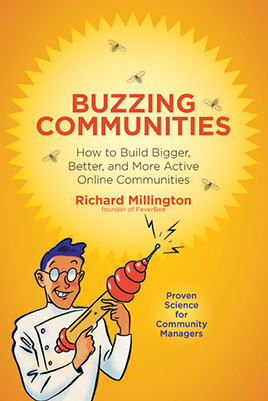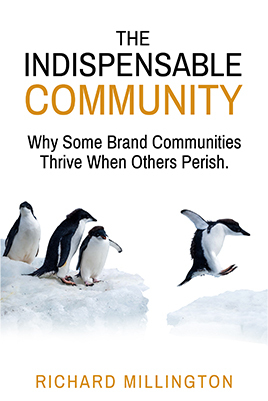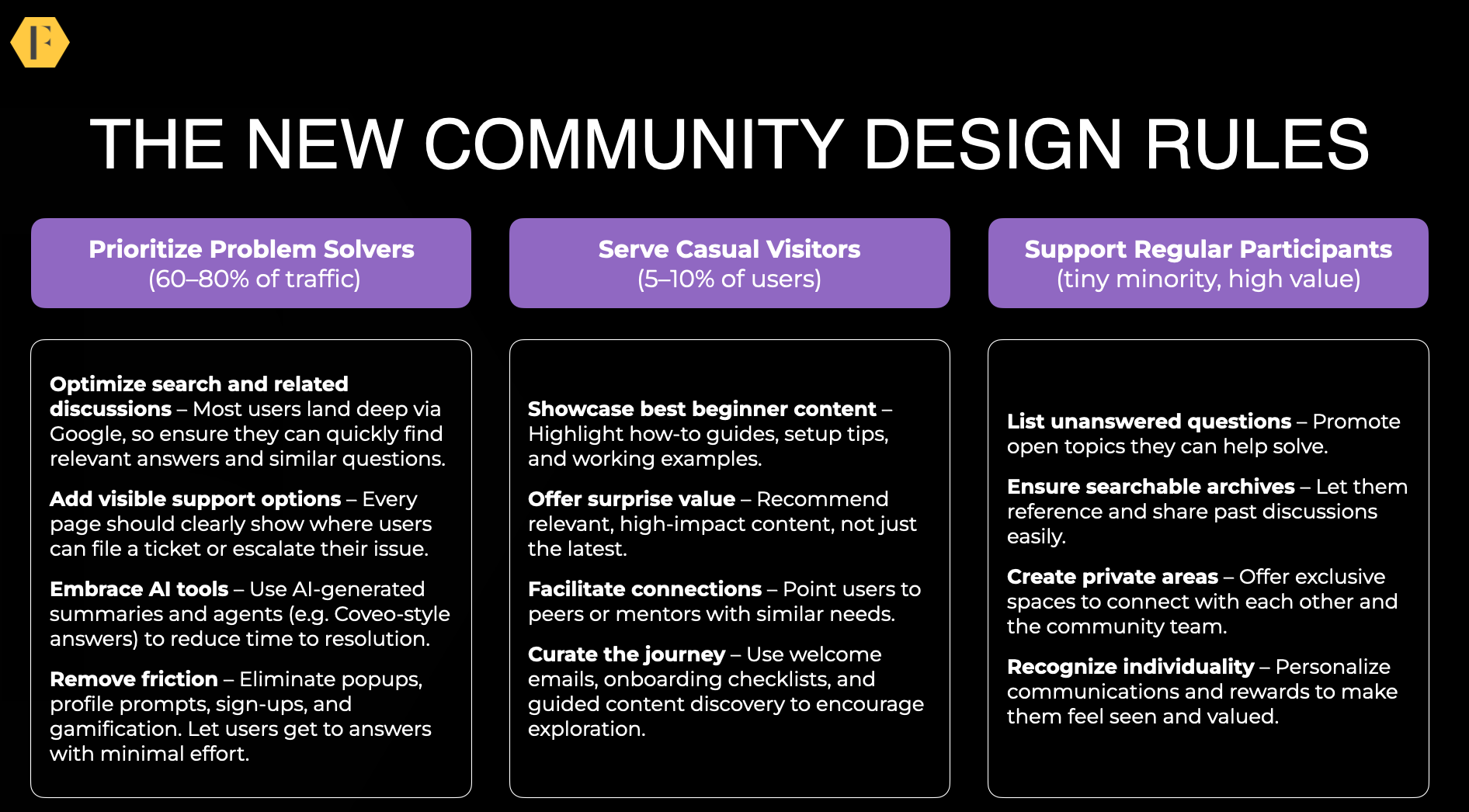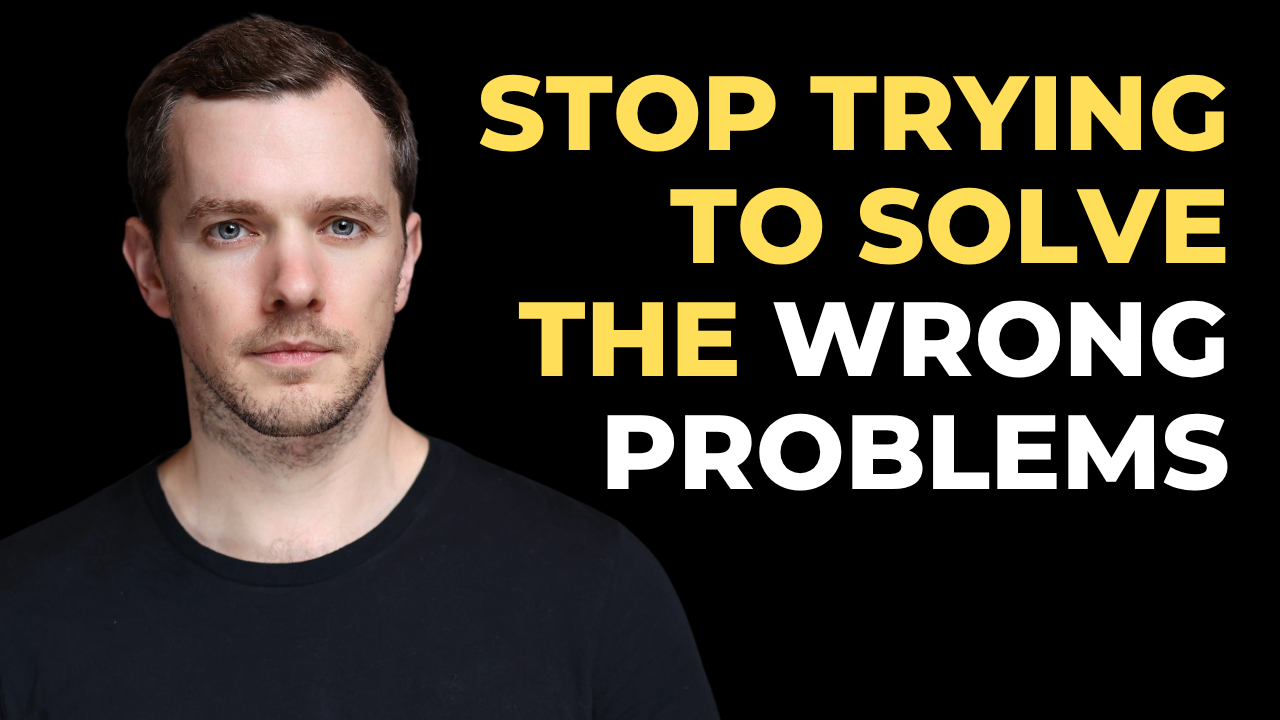Welcome to the 3rd of 3 frameworks for the month.
You can read the sweet spot and the model for getting people to join and participate first.
If you just want to see this week’s model, click here.
It’s time to end the big lie behind successful branded communities.
Most success stories you read about didn’t succeed because they organized fun activities for members (nor put members first in some unique way). They succeeded because they had a huge audience, big budget, lots of support or an innovative product to begin with.
Reading about ABSI success stories is dangerous. They make us believe it’s easier and quicker to build a community than it really is. They make us believe communities grow much bigger than they really do.
Most of us aren’t ABSI. We’re NABSI we have no audience, budget, support, or an innovative product to work with. The approach we take to build a community is VERY different from ABSI community professionals.
HOW MANY BRANDS BUILD SUCCESSFUL COMMUNITIES
Years ago, I began researching how most successful communities began.
I summarised this in The Proven Path (free download). The results were curiously similar (and very different from what we typically read).
The path the overwhelming majority of success communities took is VERY different from the path you read about in ‘big brand’ success stories.
We’ve conceptualised this into a lifecycle. One that’s both practical and useful for developing a community.

GROUP 1: THE FOUNDERS
(0 – 50 ACTIVE MEMBERS)
Your first members are people who already know, like, and trust you. A community needs an identifiable founder with existing contacts and genuine motivations for launching a community. You have to go through the CHIP process before starting a community.
Create content, host events/activities, interview key people in the field, and participate in existing groups/communities. You don’t even need a platform at this stage, just a few people who can talk somewhere on the internet (e-mail and Facebook groups are fine).
It’s important here you’re an expert in the topic before you launch a community. You need to know what’s at the exciting edge of the topic, where the clusters exist, what needs aren’t being served.
We created CommunityGeek, for example, for people interested in a scientific approach to building communities.
Sign up (or volunteer) to attend as many events as possible. Interview key people and publish your findings. Participating in existing groups. Have as many coffee meetings with prospective members as possible.
You only need 50 people to get this thing started.
But it takes a full-time effort to get those 50.
This is also why so many non-branded communities succeed. The founder already has a good reputation and contacts through this blog/connections. If you spend just 3 months CHIPping away, you’ll have a big enough chunk of audience to start a community.
Once you have them, you have to find what problem, opportunity, passion, or social need exists which isn’t being served (see the last model for more details here). Begin inviting these people to discuss it (facebook group, e-mail, meetups all work well).
You don’t need to spend any money to do this. You don’t need to do anything except build those relationships for the first 3 months.
Once you’ve got your 50, you can use the next 3 months to establish a clear vision for the group, invite these people to become co-founders of the community, and give them real, meaningful, work to do with responsibilities and autonomy to act how they wish.
You’ve just gotten started. Congratulations.
GROUP 2: THE HARDCORE ENTHUSIASTS
(50 TO 500 ACTIVE MEMBERS)
The next group of members will be friends of friends. These are people your friends tell about the community because they know it’s right for them. That ‘right for them’ means this community is going to be for those that absolutely love the tiny niche your community is focused on.
Your community concept is crucial here. It has to be laser focused and the only community of its kind. Don’t make it about the organisation, make it about the topic. Have at least two qualifiers. A community for {x} who do {y}.
Don’t allow any discussion/content/members who fall outside of the community concept. This community will only grow if its laser focused on satisfies the crazy enthusiasts with unique interests. You want prospective members to think ‘finally, a community for people like me!’.
Exclusivity works well here too. The more narrow-focused the community is on a group of 50 to 500 people, the faster it will grow. You’ll still be directly inviting people, but you should see the community gradually begins to take off itself. More growth will come from organic channels.
This is usually where you’ll develop and launch the community platform. By this point you have enough people who actively want to use the platform (a common mistake when developing a community).
This stage typically takes 6 to 12 months. Your key role is getting the right people to join, creating content to satisfy this growing niche within a niche, organizing activities, and starting to introduce elements that build a powerful sense of community.
These elements include soliciting high levels of self-disclosure, introducing common symbol systems, giving members increasing levels of autonomy, and creating a shared history.
GROUP 3: THE EARLY MAJORITY
(500 TO 5,000 ACTIVE MEMBERS)
This is where many communities struggle, falter, and die. Moore called the 3rd group the pragmatists.
This group joins for a clear benefit.
That benefit will be unique advice/expertise or reputation of being a member. In the ultramarathon community for example, regular runners began to join in droves to get expertise they couldn’t get from regular runners.
During this early majority stage it’s important to adjust your messaging to highlight the practical value of the community (unless you want to keep it exclusive/small – which is a valid option) and produce as much material as possible highlighting the practical benefit.
Most of the branded communities fail because they try to begin at this level. They don’t realise that the first members want something new, unique, and exclusive, nor that it’s hard to create a community full of practical advice if you’re the one giving the advice.
You don’t need to create the best expertise, you need to highlight and distribute the best advice shared across your community. You need to adjust your messaging (both on homepage to members/non-members and outbound for promotional purposes) to stress the unique advice/expertise/value of being a member.
In almost every possible sector the hardcore enthusiasts should have unique expertise that interests every other sector. If you get this right, this is a time of sharp growth. You will see increasing numbers of new members joining the community.
A big challenge is ensuring you convert as many of them as possible into active members, hosting off-line activities, and recruiting volunteers to help you run the community.
It’s also only at this stage you should expect to capture value from the community.
This is an entire year into the community development process. If you can’t wait this long, might be best not to create a community.
The best way to capture value is to integrate the community efforts with the organisation. That means give discounts/seek product advice from members, give members early access/sneak previews etc…
This is usually when you grow from around 250 members to 1000 members. Note this is actively participating members. If just 1 in 4 members are active, this would be 1000 – 4000 members total registered members. If members make on average 5 to 10 posts per month, you should see around 250 to 5000 posts (approx. 160 – 300 posts per day).
GROUP 4: THE LATE MAJORITY
(5,000 TO 10,000 ACTIVE MEMBERS)
Building a community is similar to drilling for oil. If you drill with the right equipment (credible founder) in the right spot (great concept) you’ll find oil gushes out quickly.
Over time, however, the pressure eases as you’ve attracted most of your members you’re likely to attract. You will discover this once you cross the 50% barrier. The remaining possible members become increasingly difficult to reach, attract, or retain.
This is when the growth in new members begins to slow down. This doesn’t mean you’re doing anything wrong, it’s just natural saturation as a result of penetrating through most of the audience you can feasibly reach. You can audiences in new regions or related sectors if you can, but it’s usually not a viable method.
The number of monthly active participating members varies wildly at this stage. The average appears to hover around 5,000 to 10,000 active members (probably around 25,000 to 50,000 registered members).
Members at this stage join not for the unique benefit, but because they see everyone else is joining. They don’t want to be left behind.
At this stage you need to change your messaging again to highlight the size and success of the community. It’s only at this stage you want to boast about being the biggest or most successful community.
If you do it before this stage, you’re driving away the early members who want to be part of a unique, different, group. Your tasks otherwise don’t change much during this stage. You continue to optimize newcomer conversion, attract and retain volunteers, and be as efficient as possible in managing the community. This stage typically lasts between 18 months and 24 months.
GROUP 5: THE TOPIC NEWCOMERS
(10,
000+ ACTIVE MEMBERS)
By this point you have a mature, established, online community that is highly influential within its sector. You’ve reached most of the members already within that topic that you’re likely to reach.
Now it’s important to optimise your community for newcomers to that topic.
It’s only the newcomers that will continue to replenish your community over the long-term. This means you need to create guides for newcomers to the field, a place for newcomers, and ensure your communications change to how you can help those become very good at the field within a short amount of time.
At this stage you want to consider search, paid adwords, and researching what steps people take when they first become interested in the topic and how to reach them during this process.
For example, in a previous community we approached various organisations inviting them to send their new staff in the role to our community to get expert advice when they joined. This gave us a constant supply of new members.
Every topic has people who will go through similar steps when they get started. You need to insert yourself in those steps and become the ultimate resource for newcomers.
At this stage, you will almost certainly find you need to create multiple sub-groups for different regions, specialisms, or roles within your community. Create this one at a time and promote each until it has reached that critical mass stage.
At this stage it’s also important to constantly to pay close attention to trends within your sector. It’s easy for a community to be left behind as the topic evolves without them (Read Marketing Myopia).
SUMMARY
I’ll keep to the bullet points:
Stage 1: Founders: Begin a community with a laser-focused mission to build strong relationships with 50 founding members by creating content, hosting activities, interviewing experts, and participating in existing groups.
Stage 2: Enthusiasts: Grow the community by finding people who share a unique passion within the field and connecting them.
Stage 3: Early majority: Focus on using the unique focus to create unique value. This will be tackling problems, opportunities, exploring passions, or unique social value.
Stage 4: Late majority: Focus on the meta-information. Become the biggest and best at what you do.
Stage 5: Newcomers: Finally orientate your community to people new to the topic. Build sub-groups for the experts and pros.
Change your messaging, efforts, and approach as your community develops.





